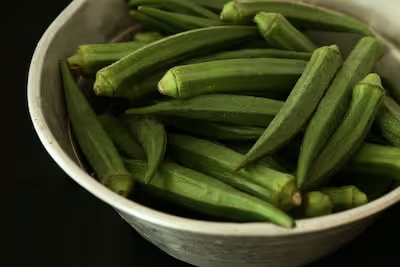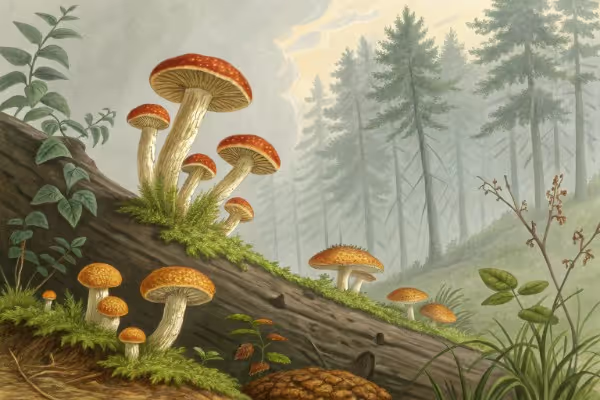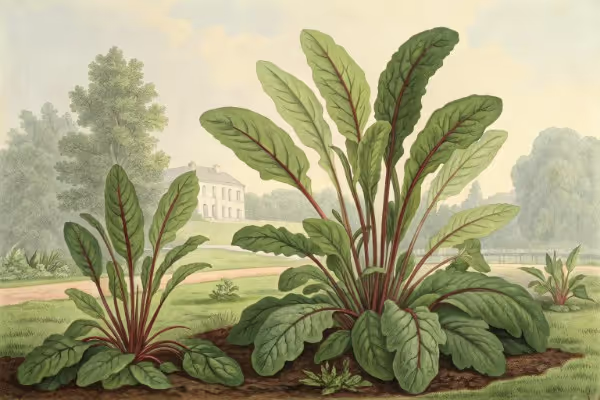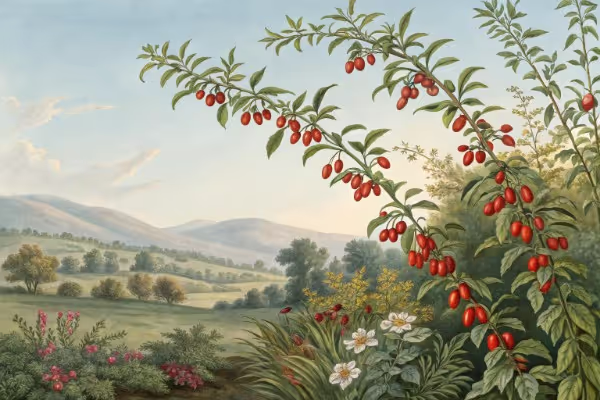Growing Peas for a Fresh, Flavorful, and Abundant Harvest
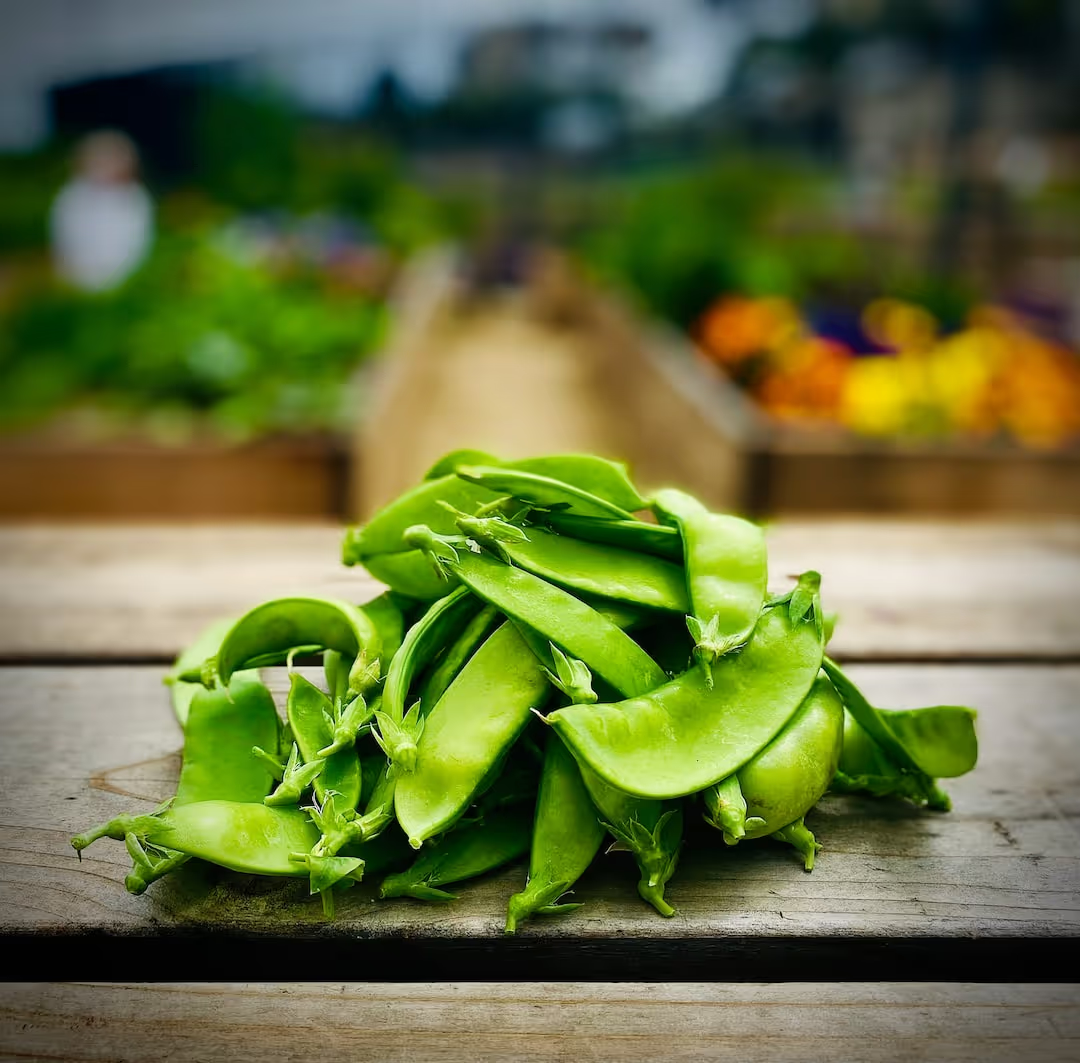
Growing Peas
Growing peas rewards you with tender pods and sweet flavor, and demands little more than healthy soil, cool weather, and a sturdy trellis. Sow peas early in spring, as soon as the ground thaws, because these hardy climbers thrive in crisp, cool air. Give them ample sun, consistent moisture, and they'll climb vigorously upward, delivering buttery, garden-fresh pods—read on to bring spring's sweetest treat to your own backyard.
Cheatsheet: Pea Planting & Bountiful Harvests
🌱 Variety & Nutrition
Snap, snow, and shelling peas—choose for fresh eating, salads, or cooking. ½ cup = 4g protein, rich in vitamin C, K, and fiber.
⏳ Timing
- Sow as soon as soil hits 40°F/4°C
- Plant 4 weeks before average last frost
- Best in cool temps: 55–70°F (13–21°C)
🛠️ Tools and Products You'll Need
- Seed packets (certified organic preferred)
- Garden fork/trowel
- Trellis/netting
- Row marker
- Mulch (straw, shredded leaves)
- Watering can or hose
- Compost
- Pea inoculant (optional, boosts yield)
🌄 Location & Soil
- Full sun (6+ hrs/day), light afternoon shade raises yields in heat
- Loose, well-drained earth, pH 6.0–7.5
- Work in 1" (2.5cm) compost per 10 sq ft (1m²) pre-planting
💧 Sowing & Watering
- Soak seeds 12hrs to speed sprouting
- Sow in double rows, 1" (2.5cm) deep, 2" (5cm) apart. Rows 6" (15cm) apart
- Firm soil over seeds
- Water gently, keep soil evenly moist (not soggy)
🌿 Trellising
- Install supports at planting
- 6ft (1.8m) tall for climbers; bush types won’t need staking
- Space for airflow—prevents powdery mildew
🌾 Care & Pest Prevention
- Mulch after sprouting to cool roots & suppress weeds
- Use floating row covers to block birds & insects
- Pinch off aphids, remove diseased vines immediately
- Add more compost after first blooms
🗓️ Harvest & Storage
- Pick pods when plump but tender (snap peas snap crisp, shelling peas juice-filled)
- Harvest every 2 days for top yields (prevents starchy pods)
- Refrigerate immediately—peas lose sweetness after picking
- Freeze extra peas within 2 hrs for maximum flavor
🥗 Health & Self-Sufficiency
High-protein, zero-fat, fresh peas support immune health. Nitrogen-fixing roots enrich soil for next crops.
-
Growing Peas for a Fresh, Flavorful, and Abundant Harvest
I plant peas as soon as the soil can be worked and the robins glare at me for jumping the gun. Cold soil builds character and flavor in peas, and that crisp snap tells you they were grown right.
Why Growing Peas pays off
Sugar content peaks on the vine, then declines fast once picked. Cold storage slows the slide and preserves that garden sweetness.
UC Davis Postharvest Center notes peas hold best at 32 F or 0 C and 95 to 98 percent humidity, with quality dropping quickly at warmer temperatures.
Choose your type like a pro
Shelling peas give you sweet kernels for the pot. Snow peas bring flat pods for the pan, and snap peas offer juicy pods for raw snacking.
Tall vines run 5 to 6 ft or 1.5 to 1.8 m, while dwarf and bush types sit closer to 2 to 3 ft or 0.6 to 0.9 m.
Timing and climate
Peas thrive in cool weather between 55 and 70 F or 13 to 21 C. Heat above 80 F or 27 C slows flower set and toughens pods, so I plant early spring or fall depending on the region.
Sow 4 to 6 weeks before the last spring frost, or 8 to 10 weeks before the first fall frost in mild climates. In hot zones, fall crops taste better and yield more.
Soil prep that actually works
Peas like a loose, well drained bed with pH 6.0 to 7.5, and they hate soggy feet. I rake in mature compost, skip heavy nitrogen, and prioritize drainage with raised rows where clay lurks.
I aim for soil temps at sowing of 40 to 75 F or 4 to 24 C, with fastest sprouting around 60 F or 16 C. If the soil smears when squeezed, I wait one more day.
Inoculation and seed handling
Peas partner with Rhizobium leguminosarum bacteria to fix nitrogen, which saves on fertilizer and improves vigor. I dust seed with a pea inoculant in any bed that has not grown legumes in a couple of years.
University extension trials report improved nodulation and yield with inoculation in new or disturbed soils, often in the 10 to 20 percent range when native populations are low.
Planting details that prevent headaches
I sow 1 inch or 2.5 cm deep in cool, moist soil and up to 2 inches or 5 cm deep in warm, dry soil. Seeds go 2 inches or 5 cm apart in rows 18 to 24 inches or 45 to 60 cm apart.
For a steady harvest, I stagger plantings every 10 to 14 days until heat arrives, then switch to fall timing. A light mulch after emergence keeps the soil cool and steady.
Trellising that saves time
Tall peas climb willingly but flop without support. I use 4 to 6 ft or 1.2 to 1.8 m netting, cattle panels, or old pea sticks jammed in like a small thicket.
Train early with a quick weave and they will ladder themselves up. Short snap or dwarf shell peas still benefit from a 2 to 3 ft or 0.6 to 0.9 m fence for clean pods and airflow.
Water and nutrition
Peas need steady moisture during flowering and pod fill. I water 1 inch or 25 mm per week in spring, a bit more in sandy soil, and I avoid splashy overhead irrigation during bloom.
Too much nitrogen produces a jungle with few pods. I side dress with compost at first flower and let the nodules feed the rest.
Pests, diseases, and clean culture
Pea aphids show up right on cue and can carry viruses. I blast them early with water, use insecticidal soap on clusters, and invite lacewings and lady beetles by keeping flowers nearby.
Seedcorn maggot targets early sowings, so I avoid fresh manure, warm the bed with fabric cover, and sow slightly later if maggot pressure is known. Light row cover from sowing to early flowering blocks trouble without chemicals.
Powdery mildew ramps up late in the season. I plant resistant lines, space well, water at soil level, and pull the vines when they tire to break the cycle.
Aphanomyces root rot haunts wet fields, so I rotate 3 to 4 years away from peas and beans and build drainage. Compacted beds invite wilt and disappointment.
Harvest cues that nail flavor
Snow peas should be flat with a tender snap. Snap peas taste best when pods fill but seeds are still young and the pod walls shine.
Shelling peas do their best work when pods are swollen but not bloated, and the seeds are bright and sweet. I use two hands to pick, and I pick often to keep pods coming.
I hydro-cool in a bowl of iced water and refrigerate at 32 to 40 F or 0 to 4 C with high humidity. Sweetness fades fast at room temp.
Yields and spacing expectations
Under good conditions I pull 2 to 8 pounds or 0.9 to 3.6 kg per 10 ft or 3 m of row depending on type and season. Small, frequent sowings beat one big glut.
Utah State University Extension pegs yield potential for peas at roughly 2 to 8 pounds per 10 feet of row, influenced by variety, water, and heat.
Top varieties for Growing Peas by goal
- Maximum sweetness: Sugar Snap, Cascadia, Sugar Ann.
- Heat tolerance for late spring: Sugar Lace II, Oregon Sugar Pod II, Green Arrow in cooler pockets.
- Container or balcony: Little Marvel, Half Pint, Tom Thumb, Sugar Ann.
- High disease resistance: Oregon Sugar Pod II, Knight, Premium.
- Freezer champions for shelling: Green Arrow, Alderman, Maestro.
- Edible shoots and tendrils: Oregon Giant, Sugar Magnolia tendril types.
- Showpiece color: Sugar Magnolia purple snap, Shiraz snow pea.
Gear I actually buy and why
- Seed houses with reliable vigor: Johnny’s Selected Seeds, Territorial Seed, High Mowing, Seed Savers Exchange. Germ tests and clean lots matter for early sowings.
- Inoculant labeled for peas and vetch. Peat-based powders coat evenly with a splash of water on the seed.
- Trellis supplies: plastic mesh netting, cattle panels, or bamboo with jute twine. Reusable panels save labor year after year.
- Row cover, light weight, for cool starts and pest exclusion. I remove at first bloom for pollinator access.
- Drip line with 8 to 12 inch or 20 to 30 cm emitter spacing. Even moisture prevents hollow pods and bitterness.
- Soil test kit or lab test before the season. Peas hate salty soils and excessive nitrogen, so I calibrate inputs.
Succession strategies that stretch the season
I start with a hardy sheller, then switch quickly to snap peas for yield, then finish with snow peas as heat creeps in. In hot areas, I add 30 percent shade cloth and mulch to buy a week or two.
For fall crops, I sow once nights dip below 60 F or 16 C. A quick low tunnel keeps the crop clean after the first frost.
Containers and small spaces
Dwarf peas in 3 to 5 gallon or 11 to 19 L pots do well with a short cage. I blend high quality potting mix with 10 to 20 percent finished compost and keep the media evenly moist.
A tablespoon of rock phosphate or bone meal per pot supports rooting in cool media. Inoculate even in containers for best vigor.
Edible shoots, quick wins
For pea shoots, I sow thickly in trays and cut at 4 to 6 inches or 10 to 15 cm. Tender tops from any variety taste sweet and grassy, like spring concentrated.
Rotations and companions
After peas, leafy greens surge with the residual nitrogen. I rotate away from legumes for 3 years to keep soilborne diseases at bay.
Good neighbors include lettuce, radish, and carrots that enjoy the filtered light under trellises. I avoid planting into fresh composted manure to reduce maggot pressure.
Common mistakes I learned the hard way
- Sowing into cold, waterlogged soil and losing half the stand. Wait for crumbly soil, not smeared mud.
- Overfeeding with nitrogen and getting pomp without peas. Let the nodules work.
- Skipping trellis on semi-dwarfs and losing pods to mud. A short fence pays back in clean harvests.
- Letting pods get old. Pick every 1 to 2 days during peak or the vines stall.
- Ignoring heat. Shade cloth and mulch buy time, or pivot to fall plantings.
Science and sources that guide my choices
UC Davis Postharvest Technology Center outlines best storage conditions and the rapid sugar to starch shift in peas. The Royal Horticultural Society emphasizes early sowing into workable soil and reliable support for tall types.
Land-grant extensions from Utah State, Iowa State, and Cornell provide sowing depths, spacing, and disease rotation intervals that hold up in the field. Mendel picked peas for a reason, and the crop still rewards careful observation.
Harvest, store, cook
I chill peas within minutes, then eat them same day if I can. For freezing, I blanch for 90 to 120 seconds, chill hard, and pack tight to keep that spring snap locked in.
Quick FAQ for Growing Peas
Germination window: 7 to 14 days at 50 to 60 F or 10 to 16 C. Speed improves as soil warms, within reason.
Fertilizer plan: compost at prep, no high nitrogen, light side dress at bloom. Inoculate seed if legumes have been absent.
Spacing: 2 inches or 5 cm between plants, 18 to 24 inches or 45 to 60 cm between rows. Tight hedges yield better on trellis.
Water: keep even, especially at flower and pod fill. Dry swings lead to misshapen pods and stringy texture.
Field note to end on
The best pea I ever ate never reached the kitchen. I picked it at sunrise, dew cold on my ankles, and it snapped like a tuning fork in the teeth.
Frequently Asked Questions About Growing Peas
What soil type supports pea growth best?
Peas appreciate well-drained, fertile soil rich in organic matter. Improve drainage and fertility by mixing compost into the top 6 to 8 inches (15 to 20 cm) of soil before planting.
When is the optimal planting time for peas?
Plant peas in early spring as soon as the soil is workable. Peas grow best when the soil temperature is around 45°F (7°C). Aim to get seeds into the ground 4 to 6 weeks before the last expected frost date.
How deep and far apart should peas be planted?
Sow pea seeds about 1 inch (2.5 cm) deep and spaced roughly 2 inches (5 cm) apart within rows. Keep rows 18 to 24 inches (45 to 60 cm) apart to provide adequate space for growth and harvesting.
Do peas require support structures to grow properly?
Peas grow healthier and produce larger crops when provided with trellises or supports. Using structures helps maintain good airflow, prevents disease, and facilitates harvesting.
How often should peas receive water?
Consistent moisture encourages steady pea growth. Provide about 1 inch (2.5 cm) of water per week, increasing slightly in dry conditions. Avoid overhead sprinkling, and water at the base of the plant early in the day to reduce disease risk.
Are peas vulnerable to pests or diseases?
Peas can encounter pests such as aphids and diseases like powdery mildew and root rot. Practice preventive care by rotating crops, maintaining consistent spacing for airflow, and applying neem oil or insecticidal soap at the first sign of infestation.
What's the best way to harvest peas for maximum flavor?
Harvest peas when pods appear full, bright, and firm, typically 60 to 70 days after planting, depending on variety. Frequent harvesting encourages prolonged production. For crispness and flavor, pick peas in the early morning hours when temperatures are still cool.
Growing peas rewards you with crisp sweetness and a bounty that keeps on giving. Start with good soil, plant early, and offer your vines a sturdy support—they’ll thank you with tender pods and bright flavor. Keep picking, and the harvest will stretch further than you’d expect. Rotate crops, feed the soil, and watch the magic unfold each spring. If you’re hooked on legumes, try growing lentils or lima beans for even more variety. With a little care and timing, growing peas brings a fresh, honest taste of the garden that’s hard to beat.
Pro Tips for Organic Pea Cultivation Success
Activate Beneficial Rhizobia
Lightly coat pea seeds with organic rhizobia inoculant before sowing to boost nitrogen fixation and increase yield by up to 20%.
Interplant Companion Herbs
- Mint: deters aphids effectively
- Chives: repels fungal diseases naturally
- Borage: attracts pollinators and enhances pea flavor subtly
Soil Conditioning with Biochar
Mix organic biochar into planting beds (10% by volume) to increase microbial activity, nutrient availability, and water retention for consistent pea pod development.
Foliar Feeding Technique
Apply kelp-based organic foliar spray once at flowering stage, improving pod formation rate and boosting pea nutritional value with added minerals and micronutrients.
Strategic Succession Planting
Sow pea seeds every 21 days during early spring (soil between 45°F–65°F / 7°C–18°C) to ensure continuous cropping, sustained harvest, and maximized space utilization.
Post-Harvest Nitrogen Boost
Chop and reincorporate spent pea vines directly into garden beds, naturally replenishing soil nitrogen levels by approximately 30–35 kg/ha (26–31 lbs/acre) for succeeding crops.
Find out which plants will thrive in your garden!
Answer a few fun questions and get custom plant recommendations perfect for your space. Let’s grow something amazing together!

start your season
